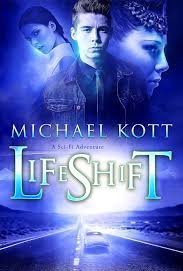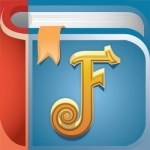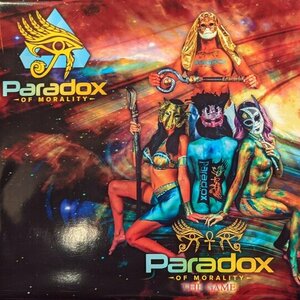
LifeShift
Book
Was Zeus a Greek God or merely a space explorer? Following his mission to bring civilization to...
young-adult

123 Color HD: Talking Coloring Book (Words Spoken In English, Spanish, French and German)
Education and Entertainment
App
*** SALE, 67% OFF, TODAY AND TOMORROW *** CELEBRATING 123 COLOR HD BEING A FEATURED APPLE STAFF...
Gareth von Kallenbach (980 KP) rated Harriet (2019) in Movies
Nov 7, 2019
The story begins after church services where Minty’s husband John Tubman who was a free slave asks the plantation owner to allow Minty to be freed so their children would be born free instead of slaves. The slave owner, Henry Broadess (Mike Marunde played with a gleeful abundance of entitlement) denies the request. This is the spark where Araminta decides to run away to live as a free person.
Minty was known for her “spells” since the accident, where she was hit in the forehead by a thrown weight. The film interprets seizures as her conversation with God. The film uses these spells as her talks with and messages received from God. That is how Harriett’s visions are explained. That she has an ability to know where to go and what to from what she sees when she has an episode.
Harriet had saved herself from slavery. She made it to the State of Pennsylvania where she would be free. After a year or so, Harriet decided that she would not be able to rest comfortably as a “free slave” without her husband and her family. That is when she decided that she would go get her loved ones.
As we know from history, she saved her family and many others through the Underground Railroad. All her rescues were successful, totaling 70 that she brought to freedom. The Civil War began a few years later. We are shown Harriet, working with the Union Army to save the lives of about 700 slaves.
The film celebrates Harriet Tubman and provides a beautiful biographical film of this amazing woman. Cynthia Erivo should get a nomination or two come award season. Pssst, she already has a Tony from her performance of The Color Purple on Broadway and a Grammy. She is already halfway to an EGOT. The cast of the film is fantastic. Leslie Odom Jr. as William Still, the man who kept the records of each emancipated slave and provided new identities to help them. Then there is Janelle Monae, as Mary Buchanon, born a free woman. She was among the group that helped Harriet make a new life in Philadelphia.
The film tells a brave tale, but it glosses over the dark history of slavery. Yes, it is one of the dark chapters in humanity. The atrocities committed in the name of self-preservation are despicable. The creators of the movie could have provided a more realistic representation of a picture of slavery.
This film is very good. Ms. Erivo performs effortlessly as Harriet. The supporting cast are very good. Harriet Tubman was a hell of a woman back in the day. I liked the movie. I also would have liked to have slavery shown in stark reality, not coated in idealism.

Bridge Constructor
Games and Entertainment
App
+++ Over 50 million players worldwide +++ +++ Number 1 in the games charts for iPad & iPhone in 89...
Hadley (567 KP) rated Ghostly Tales: Spine-Chilling Stories of the Victorian Age in Books
Jan 20, 2021
Since this is a short story collection, I will list the stories with a short synopsis and what I liked and disliked about them.
"Oh, Whistle, and I'll Come to You, My Lad" by M.R. James
A professor decides to go on vacation to work on his golf game while doing a little side work in the town's archaeology, but when he digs up an old whistle and blows into it, he instantly regrets what the whistle brings.
Liked: the buildup to the climax was done masterfully, and the superstition that was used as the premise of the story
Disliked: that the ending is never explained
"The Old Nurse's Story" by Elizabeth Gaskell
When a governess and her ward are taken to a haunted house, they found out that everyone has to pay for their misdeeds.
Liked: the perfect example of what Victorian ghost stories were
Disliked: Nothing; I really enjoyed this one
"The Signalman" by Charles Dickens
A railroad signalman tells a co-worker that he is seeing a ghost that warns him of future accidents, but his co-worker can't tell if he's telling the truth or losing his mind.
Liked: an excellent ghost story; I wish it were an entire novel
Disliked: nothing
"The Body-Snatcher" by Robert Louis Stevenson
When a medical student realizes that the 'donated' bodies are murder victims, he's not so sure he can live with the consequences.
Liked: the ending wasn't predictable
Disliked: at the start, there's a little confusion among who is who
" The Captain of the Pole-Star" by Sir Arthur Conan Doyle
A group of whalers are stuck in the middle of the ocean because of ice burgs, but the ice is the least of their problems when they begin to hear and see supernatural things out on the ice.
Liked: the plot of the story was really good
Disliked: the run-on sentences, some of the accents were hard to decipher, and the ending wasn't explained
"The Phantom Coach" by Amelia B. Edwards
A young man loses his way while on a hunt, but soon finds help with an old man that is convinced the supernatural is real, and when he senses the young man does not, he puts him up against forces from the other side.
Liked: the story never lulled, and the descriptions of the undead were amazing
Disliked: nothing, I thought the story was really good
"The Screaming Skull" by F. Marion Crawford
When the friend of a family finds a skull in the latter's home, he begins to question whether or not the husband murdered his wife.
Liked: I love that this story is actually based off an urban legend
Disliked: the way the author kept breaking away from the story to talk to the audience; it caused the flow of the story to stop
Overall, the Victorian-era authors knew how to write a ghost story. I absolutely loved this collection of short stories. I highly recommend this book to people who love a good 'ol fashioned ghost story (not the gory ones we have today).

Indian Train Simulator
Games
App
1. Available stations: Chennai - Bengaluru - Mumbai - Borivali - Surat - Bharuch - Vadodara - Anand...

Construction Simulator 2
Games
App
Ranked #1 for the iPad & iPhone in 25 Countries In the Top Ten for the iPad & iPhone in 66 Countries...
Haley Mathiot (9 KP) rated My Unfair Lady in Books
Apr 27, 2018
Genre: Historical fiction, Historical Romance
Rating: 4/5
Summary (from the back of the book):
HE CREATED THE PERFECT WOMAN… the impoverished Duke of Monchester despises the rich Americans who flock to London, seeking to buy their way into the ranks of the British peerage. So when railroad heiress Summer Wine Lee offers him a king’s ransom if he’ll teach her to become a proper lady, he’s prepared to rebuff her. But when he meets the petite beauty with the knife in her boot, it’s not her fortune he finds impossible to resist…
…FOR THE ARMS OF ANOTHER MAN. Frontier-bred Summer Wine Lee has no interest in winning over London society—it’s the New York bluebloods and her future mother-in-law she’s determined to impress. She knows the cost of smoothing her rough-and-tumble frontier edges will be high. But she never imagined it might cost her her heart…
Review: This book is so cute! The dialogue is lively, the characters are likeable (or in the case of the “bad ones”, hate-able), and the images and descriptions are clear and visible. I loved it by the end of the first chapter.
Summer was my kind of girl. She grinned when things were funny instead of trying to remain indifferent, she wasn’t afraid to show how she felt—but she could also throw a knife, shoot an arrow better than the woman champion of their day, and mount and ride a horse bareback (which I think is so cool!). She has a love for animals—and odd ones at that. She owns a three-legged dog, a dog with four legs but the size of a small horse, a monkey, a pocket-sized puppy, a fox, and a cat with no back legs (it sits in a cart and rolls around the room). She was raised by an Indian (one of those childhood dreams that I never quite left behind…) and he was the one who had taught her all that great stuff. Watching her try to settle into society was hilarious.
MY UNFAIR LADY has a lot of tension in it—both inner turmoil from poor Summer, and also sexual tension between the characters. However, it wasn’t overpowering because was so funny. I found that I laughed just as often as tension was built, so there was a constant, even balance. The end was very exciting, and I found it impossible to put down. Overall, reading this book was a hilarious and wonderful experience, and an unforgettable escape from reality.
Plot: My Fair Lady (the movie) shows a girl who is transformed to a lady, then the man falls in love with her. I love the change that has taken place in MY UNFAIR LADY—The man doesn’t want to change her, because he loves her the way she is. I like this plot better than the first!
Writing: The writing was decent, acceptable, and more readable than a lot of newly published romances. Though it wasn’t Dante, it wasn’t hard to read either.
Content: Refreshingly, there was no language in this book. Summer has her own set of expletives, but they weren’t offensive (“Tarnation!”). As far as sex, let’s just say there were several scenes (pages) in this book that I skipped completely, and just started reading again where the dialogue picked up. I didn’t miss anything important.
Recommendation: Ages 18+ to lovers of Historical fiction, Romance in general, or anyone who loves a girl who can shoot a gun, wield a knife, or use a bow and arrow better than a man!
**Thanks to Danielle at Sourcebooks for supplying my review copy!**

FarFaria Stories To Read Along
Education and Book
App
- “Brain Expander” –Parenting Magazine - “Netflix for Children's Books!” –USA Today -...
Purple Phoenix Games (2266 KP) rated Paradox of Morality in Tabletop Games
Dec 17, 2020
Paradox of Morality is a moderated scenario game between players (or teams of players) where one player will be the judge and the others will be convincing the judge to award them points based on their responses to scenario prompts.
DISCLAIMER: We were provided a prototype copy of this game for the purposes of this review. These are preview copy components, and I do not know for sure if the final components will be any different from these shown. You are invited to back the game through the Kickstarter campaign or through any retailers stocking it after fulfillment. -T
Setup is very easy: choose a judge, split up the remaining players into teams and choose the first scenario from the stack of large cards. The game may now begin!
Playing a round is similar to playing a company-mandated icebreaker activity where each team is given the same prompt by the judge to be discussed in their groups. Once the judge has called time for the scenario each team will need one or more spokespeople to deliver their arguments for what they have discussed. The judge then listens to all teams’ spokespeople and awards points based on responses given. The first team to reach 200 points is the winner.
Components. Again, this is a prototype and I do not know if the components will be any different once the game is officially produced. That said, this game is just a large stack of large prompt cards. The rules are printed on the inside of the box cover. There is minimal art in the game and it only resides on the box and on the card backs. I can describe the art as photos of trippy scantily-clad quasi-Egyptian masquerade attendees with the females wearing what appears to be only body paint. It certainly does not connect to the gameplay in any fashion, and I question its usage. Additionally, the verbiage throughout the game (and maybe it’s just for the prototype) uses abbreviated text-speech. So a prompt could read similar to, “u c a man walking down the street n he has 2 call out 2 u 2 ask a question.” I must be getting old because that is not at all endearing to me.
Similarly, the game as a whole just does not speak to me. The prompts are strange and almost railroad players and teams down paths of just grossness or straight up ridiculousness. I will admit, there are a few good scenarios in the box, but it is really hard to get past the delivery style and presentation of the game (at least in this format). Perhaps cleaning up the verbiage would help, and paring down the number of scenarios given to truly enhance the game’s offerings would be better. I don’t know, I’m not a designer.
All in all, if you are someone who lusts for those staff meetings like this, then Paradox of Morality is for you. If you dread those activities, I would stay away this time. Perhaps the game will change by the time it reaches Kickstarter or full production, and if so I would like to take another look at it. However, as it is presented now, I would be passing on this. Perhaps it is not targeting 41-year-old married men, but for me it has missed my bullseye.



